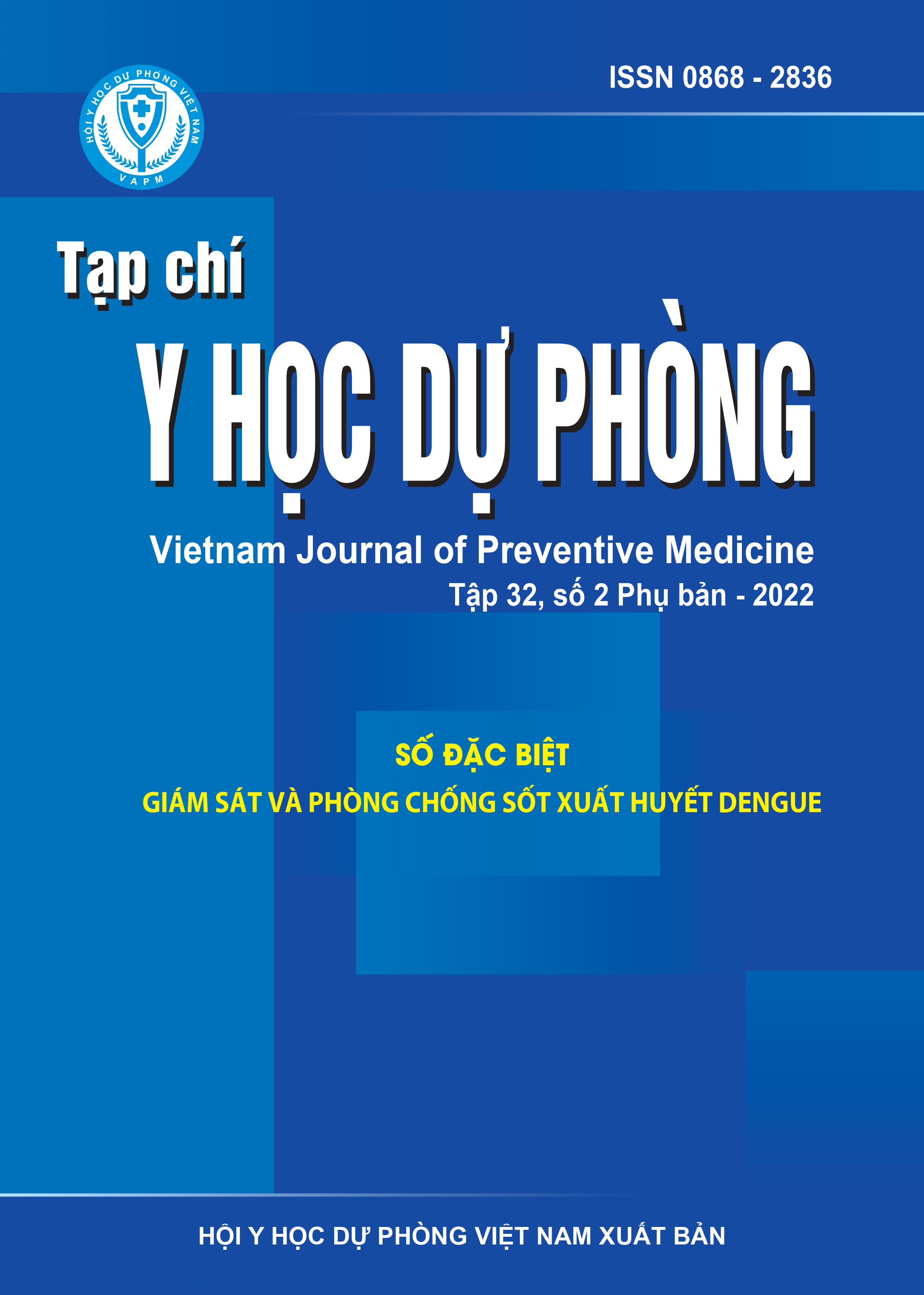Key breeding sites for Aedes larvae that transmit dengue fever at different ecological points in Hanoi in 2019
DOI:
https://doi.org/10.51403/0868-2836/2022/614Keywords:
Larvae, water containers, Aedes albopictus and Aedes aegyptiAbstract
A descriptive cross - sectional study in 3 districts across urban, urbanization and rural areas in Hanoi city where there is a dengue fever outbreak every year was carried out in May and October 2019 to find how dengue vector distributions and index. The results showed that both Aedes aegypti and Aedes albopictus larvae are present in more than 8 types of water containers in all 3 areas. However, in urban and urbanization areas, Aedes aegypti larvae density is higher than that of Aedes albopictus larvae, while in rural areas, Aedes albopictus larvae density is higher than that of Aedes aegypti. Key breeding containers of Aedes aegypti in Hanoi that stay the same at the beginning and the end of the rainy season are tanks > 500 liters (38 and 39.1%), pots (24.5 and 14.4%) and buckets (20 and 20.9%). Key breeding containers of Aedes albopictus in May 2019 are tanks > 500 liters (48%), buckets (22%) and waste, bonsai pots (12.8% and 12.6%, respectively); in October 2019, the key breeding containers are bonsai pots (28.9%), pots (24.5%) and tanks > 500 liters, waste (20.6% and 18.7% respectively). The best method to eliminate Aedes larvae in Hanoi city is to let fish eat the larvae, or to tightly covered containers, including buckets and waste collection containers.
Downloads
Downloads
Published
How to Cite
Issue
Section
License
Publication License No 150/GP-BTTTT signed on May 8, 2014;
Electronic Publication License No 322/GP-BTTTT signed on June 15, 2016.


